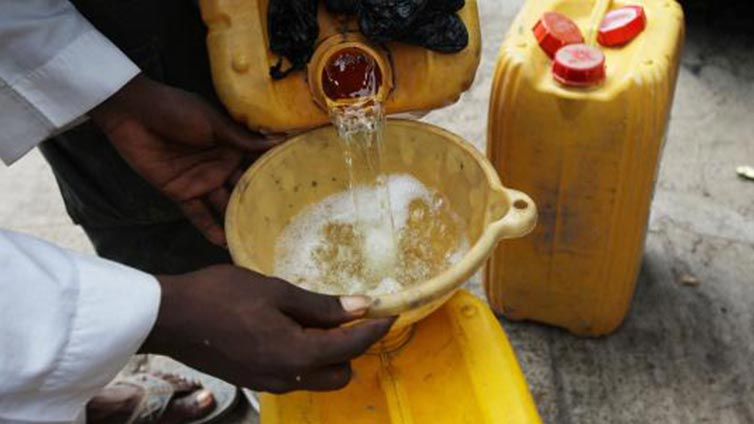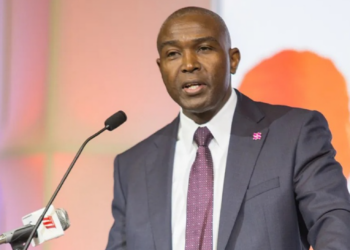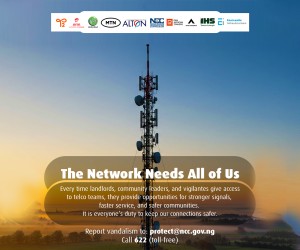Last week, while Nigerians faced rolling blackouts, the country took a significant step forward in gas logistics which could have significant implications, and lessons, for the wider sector and economy.
The movers and shakers of our gas sector gathered at a rather inconspicuous ceremony at the Hyundai Dockyard in Ulsan, Korea to watch Lady Esitmbom Ekperikpe Ekpo, wife of our Honorable Minister of State for Gas, name a new 23,000 MT LPG carrier vessel.
For the West, gas is a transition fuel but, for Nigerians, it can power modernisation in our energy sources and industry.
Nigeria’s plans to mobilise its vast natural gas reserves to meet domestic demand are ambitious. Through this, we can provide cheaper, and more environmentally friendly alternatives to PMS for fuel and the deforestation-driving biomass which powers our cooking.
Nigeria’s domestic market for LPG has exploded in the last two decades, with volume increasing twenty-six times from 50,000 metric tonnes per annum to 1.3 million MT.
NLNG has gone from contributing next to nothing to this market to being the single largest supplier of LPG to the domestic market, supplying 40% of our locally used LPG, with plans to build on their existing butane supply with the supply of propane. Unlike LNG, NLNG has committed its entire production volume to domestic markets.
The Fidelity Bank facilitated the transaction for Alfred Temile 10 will double NLNG’s LPG logistics capacity. Before now only one ship – the 22,756MT Alfred Temile – was dedicated to LPG logistics.
The timing is perfect, as NLNG seeks to grow its capacity to supply LPG to the local market through propane which has a wider range of applications in power generation and industry.
Indeed, this is the second commissioning in under 4 years of an LPG vessel – suggesting, as Ambassador Ferdinand Nwonye pointed out, that there may be sufficient appetite for a shipyard in Nigeria.
This may all be met with cynicism by consumers who face recently faced soaring cooking gas prices, but NLNG’s contribution to the market has kept Nigerians from far steeper inflationary pressures. This underscores the value of local content for the local market – a perspective that’s all too often missing in recent discourse.
Inflationary pressures on Cooking Gas
The world of gas is awash with acronyms. Sometimes it’s hard to piece all the parts together, especially when most coverage uses the vague moniker of “natural gas”.
As a consequence, the real dynamics at play in our gas sector tend to be misunderstood by the general population. This misunderstanding becomes particularly challenging when it comes to the question of cooking gas.
Since 2022, NLNG has committed 100% of its LPG production to the domestic market, of which the majority is butane, the predominant cooking fuel in Nigeria.
As a result, the company supplies 40% of the domestic market for LPG. Liquified natural gas and propane (a more industrially compatible LPG) on the other hand are the fuels we predominantly use for power generation in Nigeria. Until recently, much of the LNG that NLNG processes has been exported, though moves have been made to expand supply to the domestic market.
Even when pegged to global prices, domestically produced gas is cheaper. Why?
In short, the price of a good for the final consumer is a combination, not just of the price at which the good is sold by the original producer, but also of the additional costs piled on by transport, security and profits for the distributors. For gas, imported supply therefore faces exposure, not just to the FX liquidity crisis and the pricing of external suppliers, but also to logistics dangers.
For example, one key driver in the inflation of gas prices has been the shortage of shipping vessels, which has driven up costs along the supply chain.
The availability of vessels has been impacted by both the Panama Canal’s reduced capacity (currently operating at 44% of its peak capacity in light of low water levels due to the El Nino climate pattern) but also by Houthi interventions in the Red Sea to halt the Israeli onslaught in Gaza. As a result, projects like Temile 10, made viable by the rapidly expanding domestic market for LPG, make our domestic supply chains more resilient in the face of increasingly tumultuous global conditions.
Aside from this, the confusion in the public’s understanding of different types of gas has created an opening for rampant price gouging.
Just as with the FX crisis, where we saw significant inflation in the farm price of even goods like rice where the local variant has limited FX exposure, several Lagos terminal operators were accused of driving price hikes in cooking gas despite sourcing their LPG from NLNG at a much cheaper rate than imported gas.
Self Sufficiency as Naira Defence
As the debate around our hydra-headed currency and liquidity crises rages on, consolidating progress in local content across the oil and gas sector could hold the key to unleashing productivity driven growth. However, we face a choice – do we prioritise quick wins now in line with countries like Mozambique which exports 99% of the gas it produces, or do we focus our energies on building local supply chains which can open a pathway to a sustainable energy self-efficiency for our vast population?
A lot of the discussion so far has centred on what we can produce for the world to buy but, aside from agriculture with spotted success, the conversation about harnessing our vast natural resources for our industrialisation hasn’t moved much beyond just that – talk.
A century and a half ago, European powers scrambled among themselves for a share of African natural resources to keep their factory floors running. Coal from Enugu powered the steamships which transported our hides and tin to British factories.
Today, as much of the Global North seeks to domesticate as many supply chains as it can, Africa scrambles to offer up its resources to the Global North at a pittance, and often to the detriment of local markets.
This dynamic produces a chronic over-exposure to commodity prices and economic trends in the Global North. We are reliant on their custom, and we feel the aftereffects of their inflation through pressure on our import costs.
There’s nothing wrong with international trade but selling commodities to buy back manufactured goods is self-evidently a Mephistophelean deal. A deal which we haven’t seemed to learn from, no matter how many times it has burnt us.
Worse still, even when countries become highly successful in exports, the premium the Global North is willing to pay can have damaging consequences. The explosion in the demand for the humble avocado fuelled deforestation in Mexico, drove inflation in 2022, and pushed a staple good out of the range of affordability for many citizens. The quinoa health fad turned a staple into a luxury.
In Bolivia and Peru, which are the key producers, the crop’s per tonne cost increased by about 33% and 131% respectively, and consumption dropped by a third in just 5 years.
In India, Chinese demand for non-basmati white rice and broken rice meant that exports of the commodity flew up 5000% in just three years as producers and marketers sought to cash in on the rice rush.
The dark side of this saw a disruption in domestic supply for the feed industry, and inflation on milk, eggs and meat became uncontrollable leading to a ban on exports of both.
Lessons on Localisation
The key lesson of Alfred Temile 10 is that when state enterprises align with government policy, not just to indigenous production but also to consumers, domestic markets become viable for investment and the domestic cost curve falls.
Much is said of the value of colonial rail, but its primary function was to transport raw materials to the coast for exports and it shows.
The reality is, your market dictates the direction of your investment, and the geography of your infrastructure. So, maybe that old “Buy Nigerian” slogan is incomplete because in order to make buying Nigerian viable for more sectors, we need to produce for Nigerians.
That includes addressing the disastrous asymmetry of loans and investments in favour of export-facing sectors; the criminal idea that only foreign markets are worthy of higher quality; and the social premium we place on being able to export.


























Nigeria ought to leverage its domestic gas reserves for electricity generation and grid stabilization and improvements, rather than seeking “quick wins” by exporting LNG to Europe to help them keep their energy costs low.